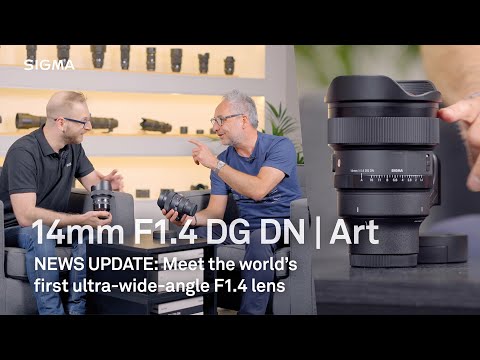Product Description
Sigma 14mm F1.4 DG DN Lens - L Mount
- Lens construction: 19 elements, 15 groups (1 SLD, 3 FLD and 4 aspherical elements)
- Inner focus system
- Compatible with high-speed autofocus
- Compatible with lens aberration correction
- Support DMF, AF+MF
- Super Multi-Layer Coating
- Aperture Ring
- Focus Mode switch
- Rear filter holder
- Dust and Splash Resistant Structure
- Water and Oil Repellent Coating (Front element)
- 11-blade rounded diaphragm
- High-precision, durable brass bayonet mount
- Made in Japan craftsmanship
Bring the night sky to life like never before with the SIGMA 14mm F1.4 DG DN Art, the world’s first 14mm F1.4 aperture lens for mirrorless cameras. The lens has been designed from the ground up for wide-angle applications such as astrophotography, landscapes, weddings and interiors, and is available in L-Mount and Sony E-mount. Thanks to advanced chromatic aberration and coma flare control the lens delivers exceptionally impressive edge-to-edge performance across all apertures, even when shooting very challenging subjects such as the night sky.

The lens has an advanced feature-set including an aperture ring with both lock and de-click functions, a customizable AFL button, a Manual Focus Lock switch, a rear filter holder, and a built-in Lens Heater Retainer to hold a heat strip firmly in place. There’s also a newly redesigned front cap that securely locks onto the lens and features two compartments for storing sheet-type rear filters. With its ultrabright aperture and ultra-wide focal length this innovative and unique optic opens up a world of creative possibilities for nightscape, landscape, cityscape and interior photographers.

The world’s first full-frame 14mm lens with an F1.4 aperture The SIGMA 14mm F1.4 DG DN | Art is the world’s first F1.4 mirrorless lens with an angle-of-view this wide. The F1.4 aperture is two-thirds of a stop brighter than its predecessor the SIGMA 14mm F1.8 DG HSM Art for DSLRs, which means it allows 58% more light on to the camera’s sensor. This makes it even better suited to photographing the night sky, as well as for using hand-held in dark environments.

Optically optimised for astrophotography With its advanced optical design that includes 1 SLD, 3 FLD and 4 aspherical elements, the lens has been designed with astrophotography in mind. With a particular emphasis on optical quality at infinity focus, the lens has very well-controlled optical aberrations and sagittal coma flare, which ensures that bright points of light remain pin-sharp and round at all apertures and across the entire frame. The lens uses in-camera optical aberration control profiles to help correct for any distortion or vignetting, whereas optical issues that are more difficult to improve digitally, such as corner softness and chromatic aberration, are eliminated by the lens’s sophisticated optical design. Using optical aberration control selectively in this way helps to keep the size and weight of the lens down.
Payment & Security
Your payment information is processed securely. We do not store credit card details nor have access to your credit card information.

























